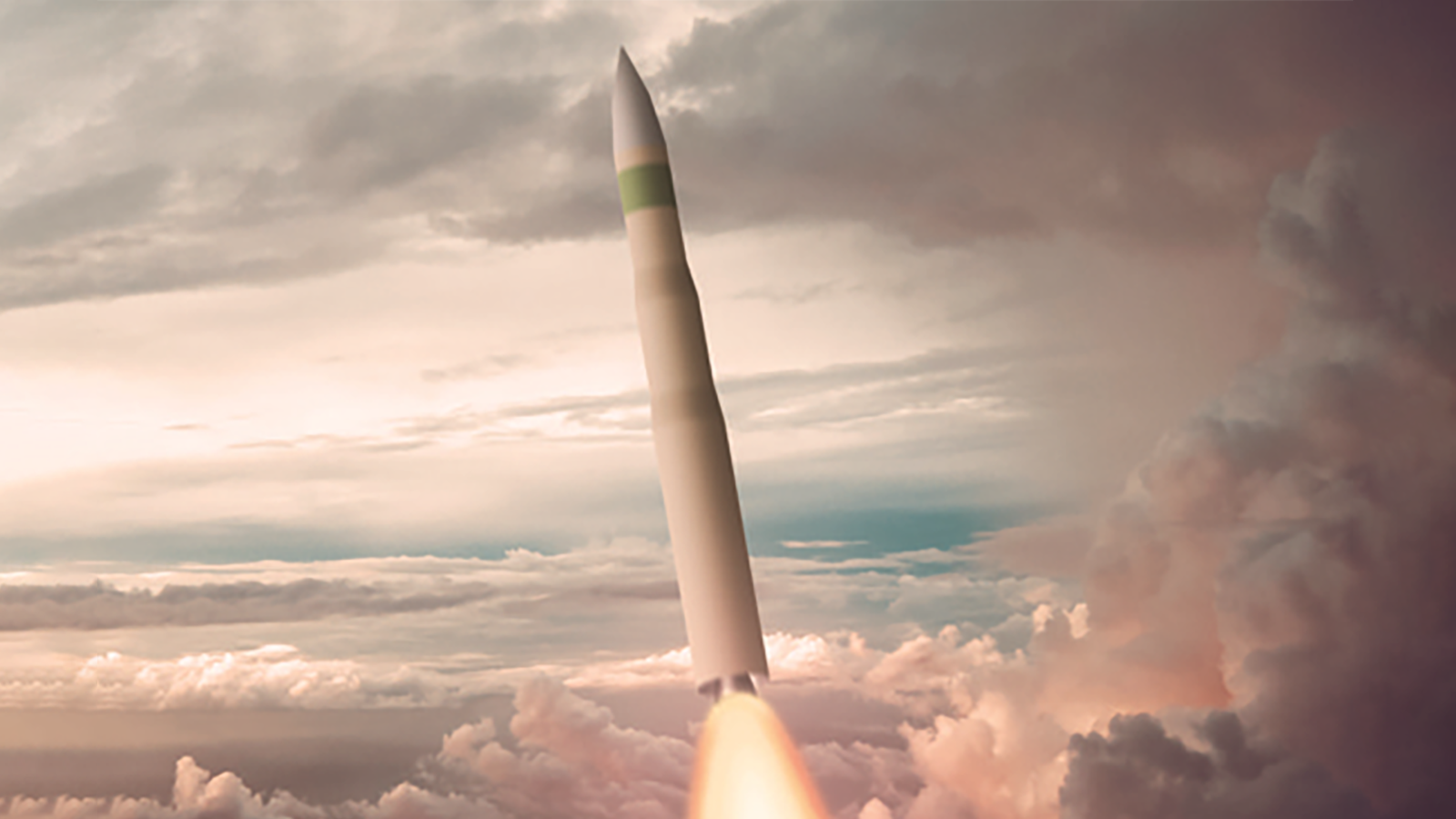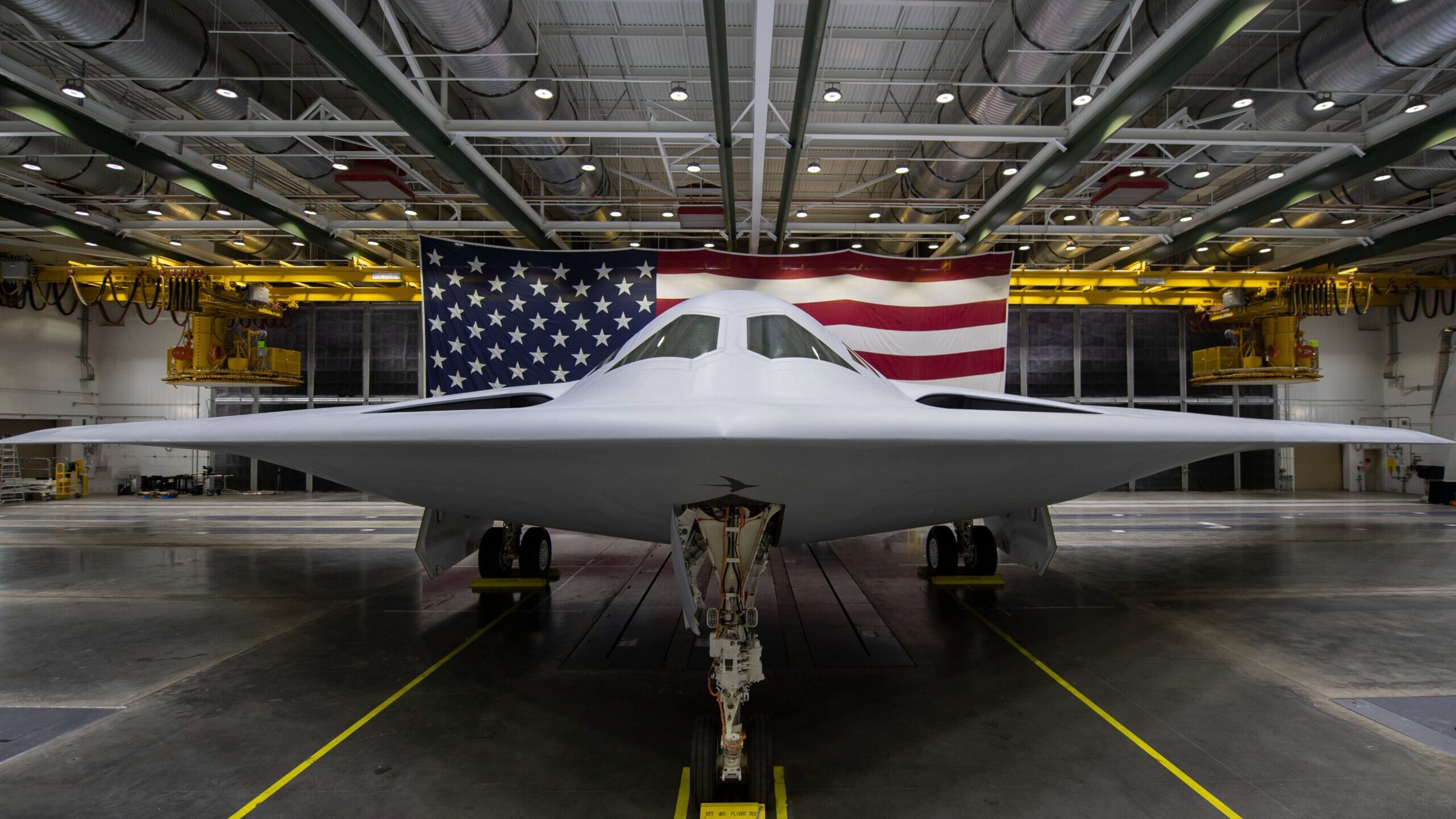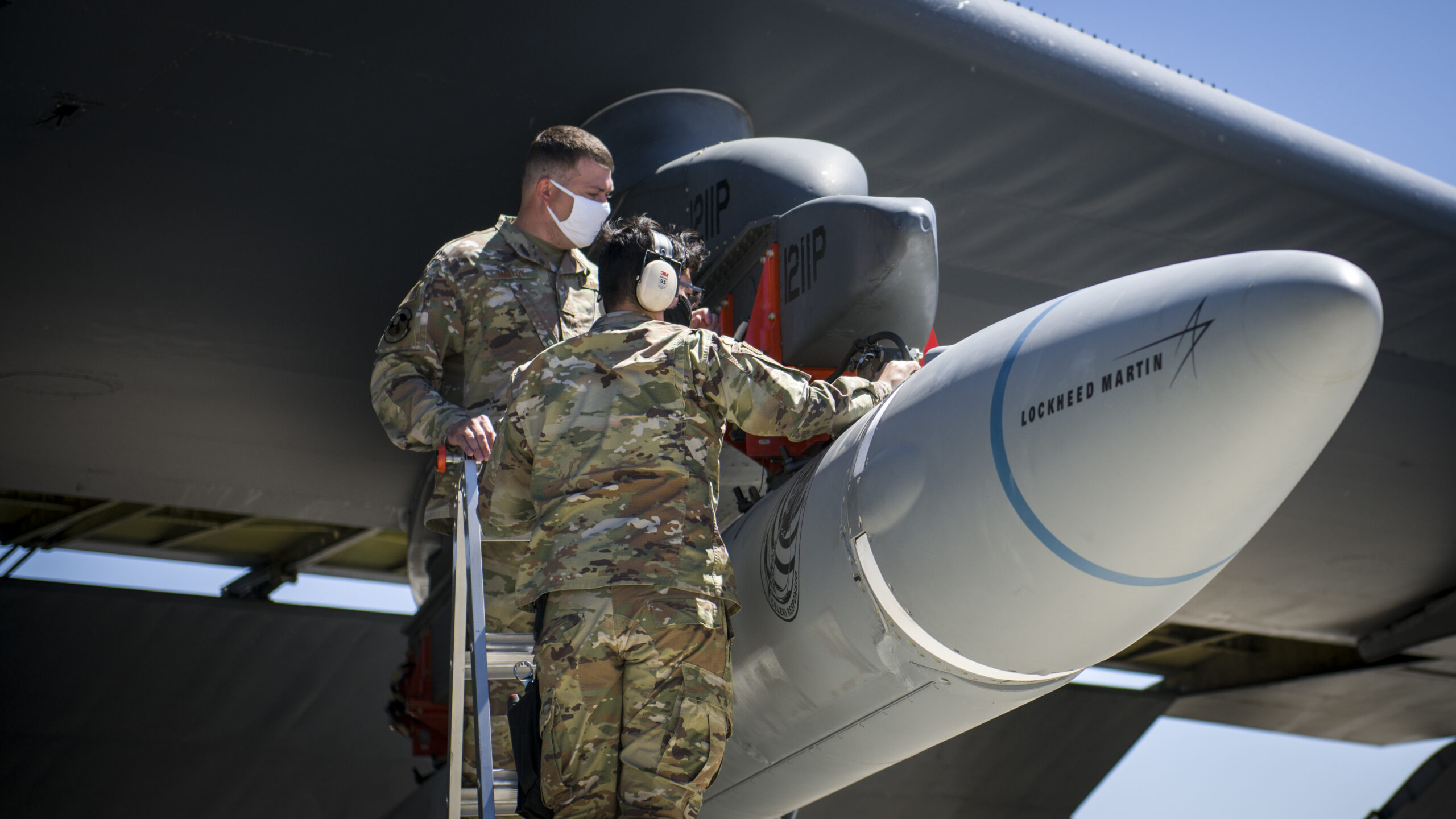
US Air Force artist’s rendering of the Sentinel in flight. (Credit: US Air Force)
WASHINGTON — Detailed budget documents released by the Air Force today show that the service plans to spend billions more, beyond fiscal 2024, to develop future combat platforms like the Next Generation Air Dominance (NGAD) fighter along with autonomous wingmen, as well as modernizing the service’s two legs of the nuclear triad.
The budget documents, called justification books or j-books, illustrate the service’s five-year spending horizon known as the Future Years Defense Plan (FYDP). According to the FYDP totals, efforts like NGAD and Collaborative Combat Aircraft (CCAs) drones would see funding more than double in the near future to continue development, whereas other programs like the B-21 Raider stealth bomber and Sentinel intercontinental ballistic missile would ramp up spending as the programs proceed with procurement.
The j-books posted today also detail portions of the service’s FY24 $185 billion budget request, where yet-to-be-released books will cover topics like operations and maintenance. The documents show some programs would see greater funding than in prior years’ budget requests, though others would remain largely consistent. Aviation Week previously reported many of the service’s FYDP totals.
In a briefing ahead of the service’s budget unveiling, Air Force Secretary Frank Kendall earlier this month said some $5 billion in FY24 would be geared to meet leading modernization efforts contained in his seven operational imperatives, which service officials say are necessary to keep pace with China.
“We’re in a situation strategically where we have to make a transformation to a next generation of capabilities,” Kendall said. “And that’s a journey that starts with a single step— a lot of steps, actually.”
ICYMI: NGAD, NGAP and CCAs, FYI
After previewing an approximately $276 million funding increase for NGAD technologies during the service’s budget rollout, the FYDP numbers show that near-term spending on NGAD will more than double by the end of the five-year period, climbing from a request of $1.9 billion in FY24 to roughly $4.1 billion in FY28.
NGAD efforts include development of a secretive, sixth-gen stealth fighter as well as the associated hardware and software to foster a family of systems, the budget documents say. The FY24 spending levels further show the Air Force may be moving more aggressively to develop the fighter than previously anticipated, as FY23 budget documents showed the service was predicting to spend under $1.7 billion in FY24.
It is still unknown what airframe primes are in the running to build the fighter, though Kendall has indicated that the program is well along the way to a down-select.
To power NGAD, the service will also continue developing the fighter’s Next Generation Adaptive Propulsion (NGAP) engine, seeking $595 million in the coming fiscal year. RDT&E spending will finish off in FY27 at a level of $291 million, according the the j-books, which state that “competitive prototyping” work would proceed between FY25 and FY28. Both Pratt & Whitney and General Electric are participating in NGAP, which a top official suggested last year could move to down-select as soon as this year.
And to fight alongside NGAD, the Air Force also wants to significantly ramp up spending on CCA drones. Last year, the Air Force’s FY23 request suggested the service would seek roughly $50 million in FY24 for work to develop the CCA platform, but the service is now asking lawmakers for nearly eight times as much at $392 million. The program’s topline is projected to dip in funding to around $246 million in FY25 but will shoot up to $1.6 billion in FY27 and will approximately double to $3 billion in FY28.
Along with funds for new sensor development, the Air Force is also supplementing CCA efforts with two new starts: one for an Experimental Operations Unit (EOU) that will run risk reduction tasks like generating operational concepts for deployment, and another for expanding autonomy test beds, which an industry executive previously pointed to as a choke point for CCA development.
RELATED: Inside the special F-16 the Air Force is using to test out AI
The Air Force requested about $69 million to fund EOU in FY24, which levels off around $55 million in FY26. The test bed project, called the Viper Experimentation and Next-gen Operations Model (VENOM), would run about $50 million in FY24, the budget documents say, but would drop to around $17 million in FY25 and would continue near that level through FY28.
According to Kendall, the service is planning a “nominal” first tranche of 200 NGAD fighters and 1,000 CCAs.
Raider and Sentinel
Considerable funds will be amassed to recapitalize the service’s nuclear portfolio for the first time since the Cold War, with the next-gen B-21 bomber and Ground Based Strategic Deterrent (GBSD), the replacement for the Minuteman III missile fleet, both receiving tens of billions for combined research and procurement through the FYDP estimates.
For the B-21, the service is asking for about $2.7 billion to continue development of the bomber, which will slope down to $1.2 billion by FY28. Additional B-21 “modernization” efforts will also cost about $241 million in FY24, which through FY28 will total about $1.7 billion, according to the budget document.
After kickstarting procurement in FY23, funds to buy the bomber will climb as RDT&E work falls: the Air Force will buy an increasing number of the bombers as the years progress, requesting just under $2 billion in FY24 and eventually climbing up to $5.7 billion in FY28. Specific procurement quantities for the Raider, built by Northrop Grumman, are classified.
RELATED: Top secret B-21 Raider stealth bomber finally revealed in high-powered ceremony

Unveiled Dec. 2, 2022, the B-21 Raider will be a dual-capable, penetrating-strike stealth bomber capable of delivering both conventional and nuclear munitions. The B-21 will form the backbone of the future Air Force bomber force consisting of B-21s and B-52s. (U.S. Air Force photo)
As for the Air Force’s aging ICBM inventory, the service is seeking over $3.7 billion in FY24 to continue engineering and manufacturing development (EMD) for the new Sentinel missile also manufactured by Northrop Grumman, with end-to-end EMD costs expected to run as high as $20.6 billion to finish out the phase past FY28.
The coming fiscal year will also be the first time the program sees procurement, with $539 million requested for long-lead parts. After projecting a similar funding level in FY25, procurement funds will skyrocket to nearly $5.7 billion in FY26 as production of the missile takes off.
The Air Force predicts about $60.7 billion in total will be spent on procurement for the Sentinel missile fleet, which will serve through 2075, the budget documents say.
Hypersonics
Following confirmation by service officials that the Air Force would not seek to procure any hypersonic missiles in the upcoming fiscal year, the j-books show that FY24 could be the final year for RDT&E spending on the Air-Launched Rapid Response Weapon (ARRW).
Developed by Lockheed Martin, ARRW is a hypersonic glide vehicle, which can be launched from a platform like a B-52 and is distinguished from traditional ICBMs for its ability to maneuver in flight. According to the Air Force’s budget documents, the service is requesting about $150 million for continued development of ARRW and will stick to previous plans to wrap up RDT&E spending in FY24.

Master Sgt. John Malloy and Staff Sgt. Jacob Puente, both from 912th Aircraft Maintenance Squadron, secure the AGM-183A Air-launched Rapid Response Weapon Instrumented Measurement Vehicle 2 as it is loaded under the wing of a B-52H Stratofortress at Edwards Air Force Base, California, Aug. 6. (Air Force photo by Giancarlo Casem)
After three consecutive failed tests, the ARRW program achieved a successful all-up round evaluation in December when an ARRW missile was launched from a B-52 off the coast of southern California. Still, service officials expressed some reservations about buying the missile — doubts are reflected in the FY24 budget request — though they have emphasized no final procurement decision has been made.
The Air Force’s other key hypersonic missile effort, the Hypersonic Attack Cruise Missile (HACM) whose prime contractor is Raytheon Technologies, will continue development through FY28. The documents show that RDT&E spending will peak at about $557 million in FY25 before steadily falling to $205 million in FY28, the final year of RDT&E for the program. Future missile procurement estimates were not immediately available.






















